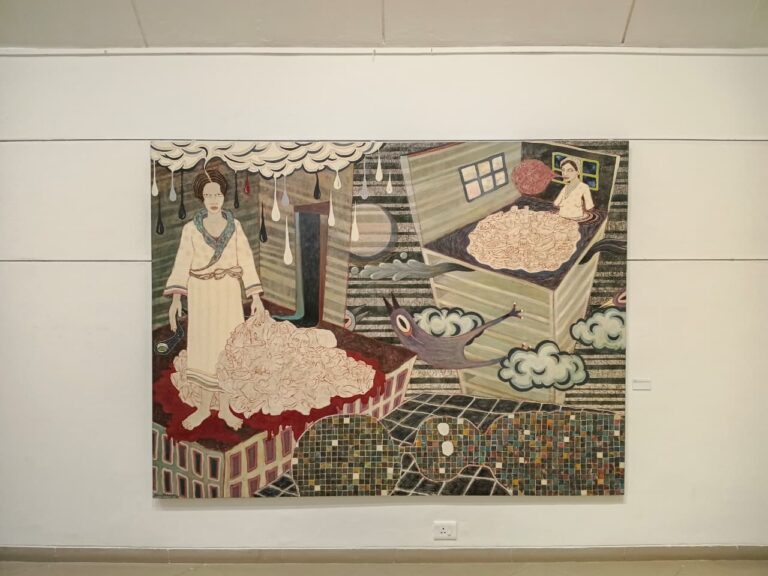For collector Max Modesti, an Italo-French fashion designer who has been living in Mumbai for over a decade, collecting art is about acquiring slices of the artist’s life. As a collector who began at the tender age of 15, his first love was Venetian glass from the 50s and 60s, of which he has one of the largest collections in the world. He then moved on to French contemporary art before discovering the nascent art scene in Mumbai.

Tell us about your initial foray into the Indian art scene.
I arrived in 1993, and back then the art scene was very different. It was very hard to find artists and it took me a long time to discover what was happening beneath the surface. At the same time, Chinese appeared on the international scene of the first time. I realised that if there is Chinese art, there must be Indian art, so this made me more determined to find it.
So how did you do that?
I started talking to people in ‘93. Whenever I mentioned art I would always get the same response back: they’d start telling me about Padamsee, Raza, Husain. Back then, those artists were selling at a fraction of the current price. The fact that I didn’t buy any of those artists is proof that I do not collect for investment. Anyway, I then went to Baroda as I realised there were a lot of artists coming out of there. There are so many other places though. It took me 3-4 years really connect to local artists.

What’s your relationship with gallerists?
Well, I tend to buy only from galleries. I do also buy from fairs, but not auctions. I really respect Abhay Maskara. When I met him I thought: Wow! He’s really on a crusade. He takes the extremes of Indian art, and wants to present them to the world. He does whatever it takes to bring up his artists. I like the fact that he is very strategic about everything, everything he does is master-minded. He knows it might take him 20 years to get to where he wants to be, and he’s ready for that.
So what makes you collect?
What truly interests me is the artist. For me, the painting reflects the artist and collecting their paintings is like buying a slice of that person’s life. I like to see the evolution of the artist through their art. This is why I have a rule that I follow artists- it is a commitment.

How many artists have you committed to in such a way and can you tell us about them?
There are about 8 internationally, and 2 are Indians. The first Indian artist I started collecting was Baptist Coelho. I bumped into him through a friend in 1999, who knew I’d like him because no-one understood his work. Meeting him was very interesting. He refers a lot to the German artist Beuys, and I remember feeling shocked to find such references in India. After I met him it took me a while before I made that commitment to follow his progression as an artist. I started collecting his work in 2001 and I now buy at least one piece from every series he produces. I also collect Pooja Iranna, T.Venkanna and Shine Shivan.
Have you become friends?
I actually try to avoid social relationships with artists because I don’t want to intrude into their life. It’s always my pleasure to meet with them once or twice a year, however, to discuss how I can support them.
Do you ever feel possessive about your artists?
I cured myself of that 10 years ago! I used to be very possessive, but now that’s changed. Today, I try to help them get exposure. I have introduced Baptist to collectors all over the world, and really want him to be appreciated and known.

And where do you keep your treasured art?
Most of them are in storage! There are space constraints in my flat. It’s alright when you just buy paintings, but as you get into installation pieces it gets hard. For me, it’s not so important to display my art. I know that the pieces are there. It is also so important to have the right environment to display an art work-the lighting for example, needs to be good.
Do you not have a desire for your pieces to be viewed?
No, I do. I have lent some of my pieces already for an exhibition in Germany and it is part of my vision to share my works. I would also like to donate it when the right time comes. We got through phases as collectors: accumulation phases and giving away. In my 20s, I was in an accumulation phase. Now, I am less concerned with that. For example, I said to Baptist, I am going to give you money for a piece but I don’t want to own it. What disturbs me is that nowadays everything has an exchange value. Collecting is so personal you see, it is related to yourself. Many have a painting on the wall to show that they own a Gupta, or a Koons or something else. That’s not the case for me.














